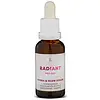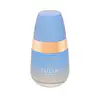What's inside
What's inside
 Key Ingredients
Key Ingredients

 Benefits
Benefits

 Concerns
Concerns

No concerns
 Ingredients Side-by-side
Ingredients Side-by-side

Water
Skin ConditioningPropanediol
SolventGluconolactone
Skin ConditioningGlycerin
HumectantPhenoxyethanol
PreservativeSodium Hyaluronate
HumectantSodium Hydroxide
BufferingAscorbyl Glucoside
AntioxidantBetula Alba Juice
AstringentPanthenol
Skin ConditioningHydrolyzed Hyaluronic Acid
HumectantEthylhexylglycerin
Skin ConditioningPEG-40 Hydrogenated Castor Oil
EmulsifyingTocopherol
AntioxidantBiosaccharide Gum-1
HumectantCitric Acid
BufferingChlorphenesin
AntimicrobialWater
Skin ConditioningGlycerin
HumectantSqualane
EmollientPropanediol
SolventBetaine
HumectantMethylheptyl Isostearate
Skin ConditioningUndecane
EmollientSodium Acrylates Copolymer
Niacinamide
SmoothingPolyglyceryl-4 Caprate
EmulsifyingTulipa Hybrid Flower Extract
Skin ConditioningTerminalia Ferdinandiana Fruit Extract
AntioxidantAstragalus Membranaceus Root Extract
EmollientAtractylodes Macrocephala Root Extract
Skin ConditioningBupleurum Falcatum Root Extract
Skin ConditioningHydrolyzed Hyaluronic Acid
HumectantCholecalciferol
Tocopherol
AntioxidantAscorbyl Glucoside
AntioxidantAllantoin
Skin ConditioningSodium Citrate
BufferingSodium Hyaluronate
HumectantSodium Gluconate
Skin ConditioningSodium Lactate
BufferingXylitylglucoside
HumectantAnhydroxylitol
HumectantXylitol
HumectantLecithin
EmollientTridecane
PerfumingAcacia Senegal Gum
MaskingSucrose
HumectantZea Mays Starch
AbsorbentCaprylic/Capric Triglyceride
MaskingGluconolactone
Skin ConditioningSodium Benzoate
MaskingCaprylyl Glycol
EmollientPotassium Sorbate
PreservativePhenethyl Alcohol
MaskingCalcium Gluconate
HumectantCitric Acid
BufferingSodium Hydroxide
BufferingMica
Cosmetic ColorantTitanium Dioxide
Cosmetic ColorantWater, Glycerin, Squalane, Propanediol, Betaine, Methylheptyl Isostearate, Undecane, Sodium Acrylates Copolymer, Niacinamide, Polyglyceryl-4 Caprate, Tulipa Hybrid Flower Extract, Terminalia Ferdinandiana Fruit Extract, Astragalus Membranaceus Root Extract, Atractylodes Macrocephala Root Extract, Bupleurum Falcatum Root Extract, Hydrolyzed Hyaluronic Acid, Cholecalciferol, Tocopherol, Ascorbyl Glucoside, Allantoin, Sodium Citrate, Sodium Hyaluronate, Sodium Gluconate, Sodium Lactate, Xylitylglucoside, Anhydroxylitol, Xylitol, Lecithin, Tridecane, Acacia Senegal Gum, Sucrose, Zea Mays Starch, Caprylic/Capric Triglyceride, Gluconolactone, Sodium Benzoate, Caprylyl Glycol, Potassium Sorbate, Phenethyl Alcohol, Calcium Gluconate, Citric Acid, Sodium Hydroxide, Mica, Titanium Dioxide
Ingredients Explained
These ingredients are found in both products.
Ingredients higher up in an ingredient list are typically present in a larger amount.
Ascorbyl Glucoside is a stable form of Vitamin C. It is created by combining glucose from starch.
When applied to skin, Ascorbyl Glucoside turns into Ascorbic Acid.
Ascorbyl Glucoside is an antioxidant. Antioxidants help fight free-radicals, or molecules that may damage skin cells.
It can help to reduce redness, improve skin texture, reduce the effects of aging, reduce the visibility of dark spots, and brighten skin.
Read more about other types of Vitamin C:
Learn more about Ascorbyl GlucosideCitric Acid is an alpha hydroxy acid (AHA) naturally found in citrus fruits like oranges, lemons, and limes.
Like other AHAs, citric acid can exfoliate skin by breaking down the bonds that hold dead skin cells together. This helps reveal smoother and brighter skin underneath.
However, this exfoliating effect only happens at high concentrations (20%) which can be hard to find in cosmetic products.
Due to this, citric acid is usually included in small amounts as a pH adjuster. This helps keep products slightly more acidic and compatible with skin's natural pH.
In skincare formulas, citric acid can:
While it can provide some skin benefits, research shows lactic acid and glycolic acid are generally more effective and less irritating exfoliants.
Most citric acid used in skincare today is made by fermenting sugars (usually from molasses). This synthetic version is identical to the natural citrus form but easier to stabilize and use in formulations.
Read more about some other popular AHA's here:
Learn more about Citric AcidGluconolactone is a PHA. PHAs are a great gentle alternative to traditional AHAs.
When applied, Gluconolactone has the same affect on skin as AHAs such as lactic acid. It helps dissolve the dead skin cells in the top layer of your skin. This improves texture and brightens the skin.
PHAs are more gentle than AHAs due to their larger structure. They do not penetrate as deeply as AHAs and take a longer time to dissolve dead cells. Studies show PHAs do not cause as much irritation.
Gluconolactone has some interesting properties:
In a 2004 study, Gluconolactone was found to prevent UV damage in mouse skin cells and has not been found to increase sun sensitivity. However, we still recommend wearing SPF daily.
This ingredient is is an created by reacting gluconic acid with an alcohol.
Learn more about GluconolactoneGlycerin is already naturally found in your skin. It helps moisturize and protect your skin.
A study from 2016 found glycerin to be more effective as a humectant than AHAs and hyaluronic acid.
As a humectant, it helps the skin stay hydrated by pulling moisture to your skin. The low molecular weight of glycerin allows it to pull moisture into the deeper layers of your skin.
Hydrated skin improves your skin barrier; Your skin barrier helps protect against irritants and bacteria.
Glycerin has also been found to have antimicrobial and antiviral properties. Due to these properties, glycerin is often used in wound and burn treatments.
In cosmetics, glycerin is usually derived from plants such as soybean or palm. However, it can also be sourced from animals, such as tallow or animal fat.
This ingredient is organic, colorless, odorless, and non-toxic.
Glycerin is the name for this ingredient in American English. British English uses Glycerol/Glycerine.
Learn more about GlycerinHydrolyzed Hyaluronic Acid is a form of hyaluronic acid. It is created by the hydrolysis of hyaluronic acid with a high molecular weight. Once created, Hydrolyzed Hyaluronic Acid has a low molecular weight.
Low molecular weight HA has been shown to hydrate and increase elasticity of the skin. Increasing elasticity is also associated with reduction of wrinkle depth.
One study found topical low molecular weight hyaluronic acid may be considered for the treatment of rosacea in the adult population. However, we always recommend speaking with a professional about your skin concerns.
Hyaluronic acids are a humectant. This means they draw moisture from the air. Hyaluronic acids help moisturize, soothe, and protect the skin.
Read more about other common forms of hyaluronic acid:
Learn more about Hydrolyzed Hyaluronic AcidPropanediol is an all-star ingredient. It softens, hydrates, and smooths the skin.
It’s often used to:
Propanediol is not likely to cause sensitivity and considered safe to use. It is derived from corn or petroleum with a clear color and no scent.
Learn more about PropanediolSodium Hyaluronate is hyaluronic acid's salt form. It is commonly derived from the sodium salt of hyaluronic acid.
Like hyaluronic acid, it is great at holding water and acts as a humectant. This makes it a great skin hydrating ingredient.
Sodium Hyaluronate is naturally occurring in our bodies and is mostly found in eye fluid and joints.
These are some other common types of Hyaluronic Acid:
Learn more about Sodium HyaluronateSodium Hydroxide is also known as lye or caustic soda. It is used to adjust the pH of products; many ingredients require a specific pH to be effective.
In small amounts, sodium hydroxide is considered safe to use. However, large amounts may cause chemical burns due to its high alkaline.
Your skin has a natural pH and acid mantle. This acid mantle helps prevent harmful bacteria from breaking through. The acid mantle also helps keep your skin hydrated.
"Alkaline" refers to a high pH level. A low pH level would be considered acidic.
Learn more about Sodium HydroxideTocopherol (also known as Vitamin E) is a common antioxidant used to help protect the skin from free-radicals and strengthen the skin barrier. It's also fat soluble - this means our skin is great at absorbing it.
Vitamin E also helps keep your natural skin lipids healthy. Your lipid skin barrier naturally consists of lipids, ceramides, and fatty acids. Vitamin E offers extra protection for your skin’s lipid barrier, keeping your skin healthy and nourished.
Another benefit is a bit of UV protection. Vitamin E helps reduce the damage caused by UVB rays. (It should not replace your sunscreen). Combining it with Vitamin C can decrease sunburned cells and hyperpigmentation after UV exposure.
You might have noticed Vitamin E + C often paired together. This is because it is great at stabilizing Vitamin C. Using the two together helps increase the effectiveness of both ingredients.
There are often claims that Vitamin E can reduce/prevent scarring, but these claims haven't been confirmed by scientific research.
Learn more about TocopherolWater. It's the most common cosmetic ingredient of all. You'll usually see it at the top of ingredient lists, meaning that it makes up the largest part of the product.
So why is it so popular? Water most often acts as a solvent - this means that it helps dissolve other ingredients into the formulation.
You'll also recognize water as that liquid we all need to stay alive. If you see this, drink a glass of water. Stay hydrated!
Learn more about Water